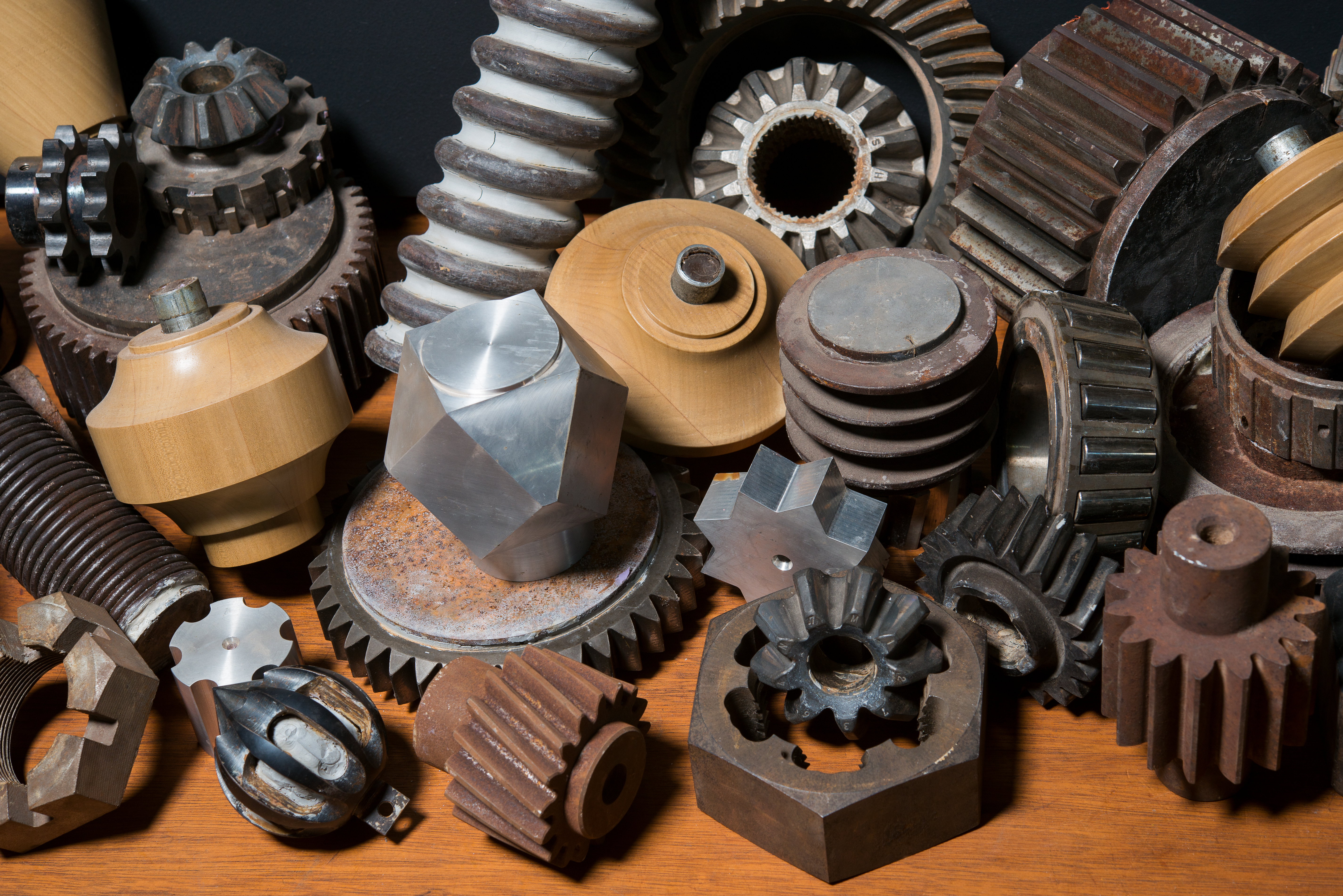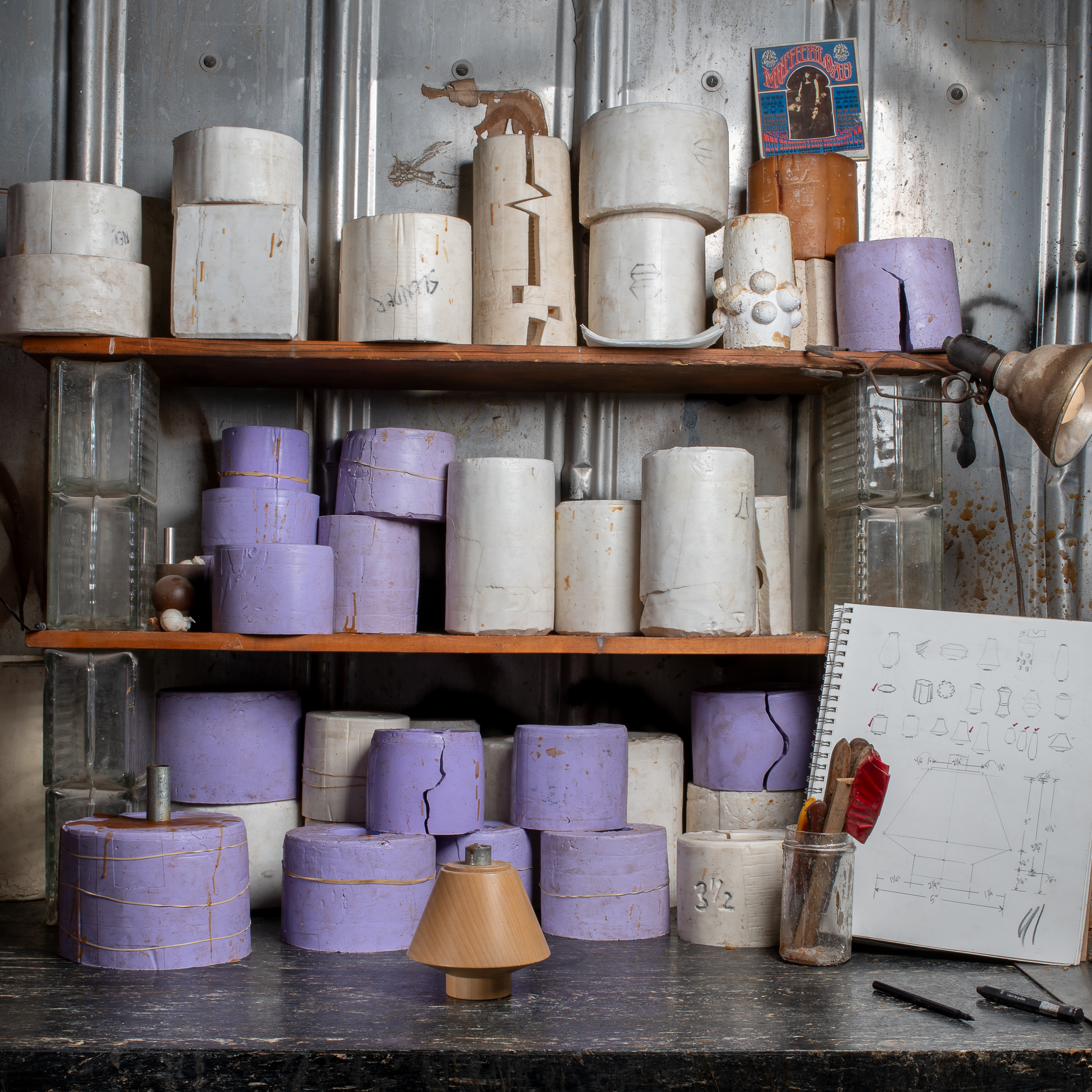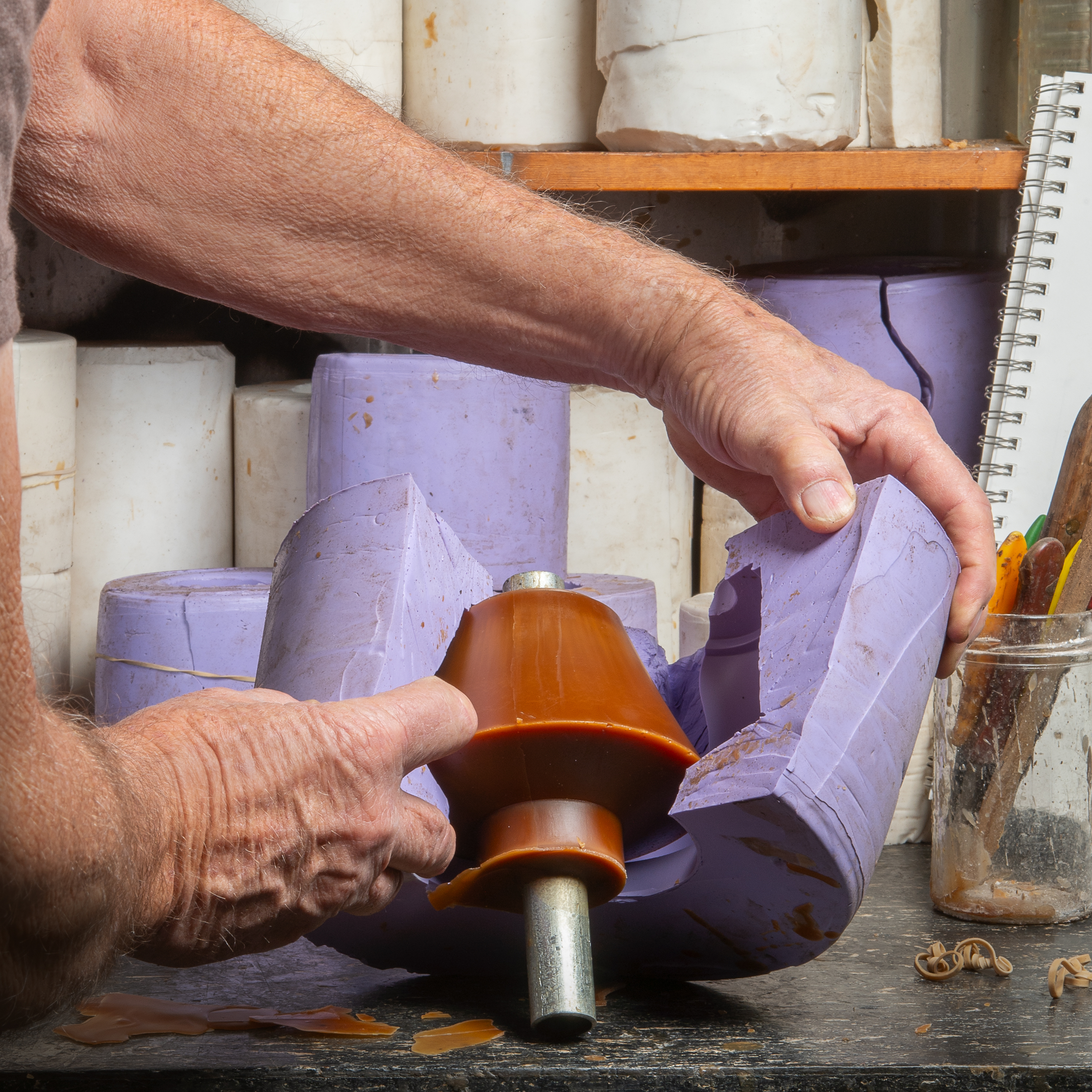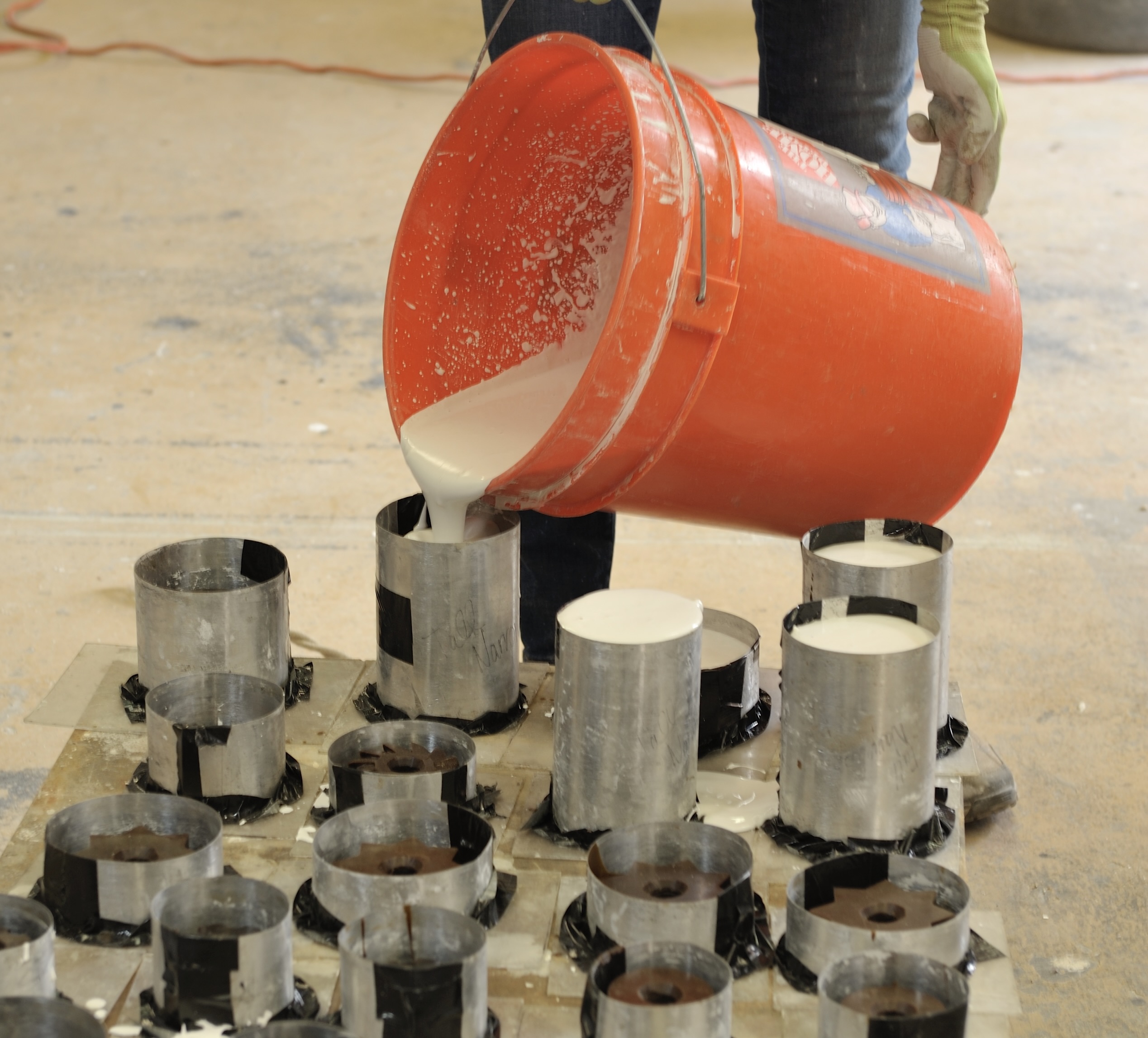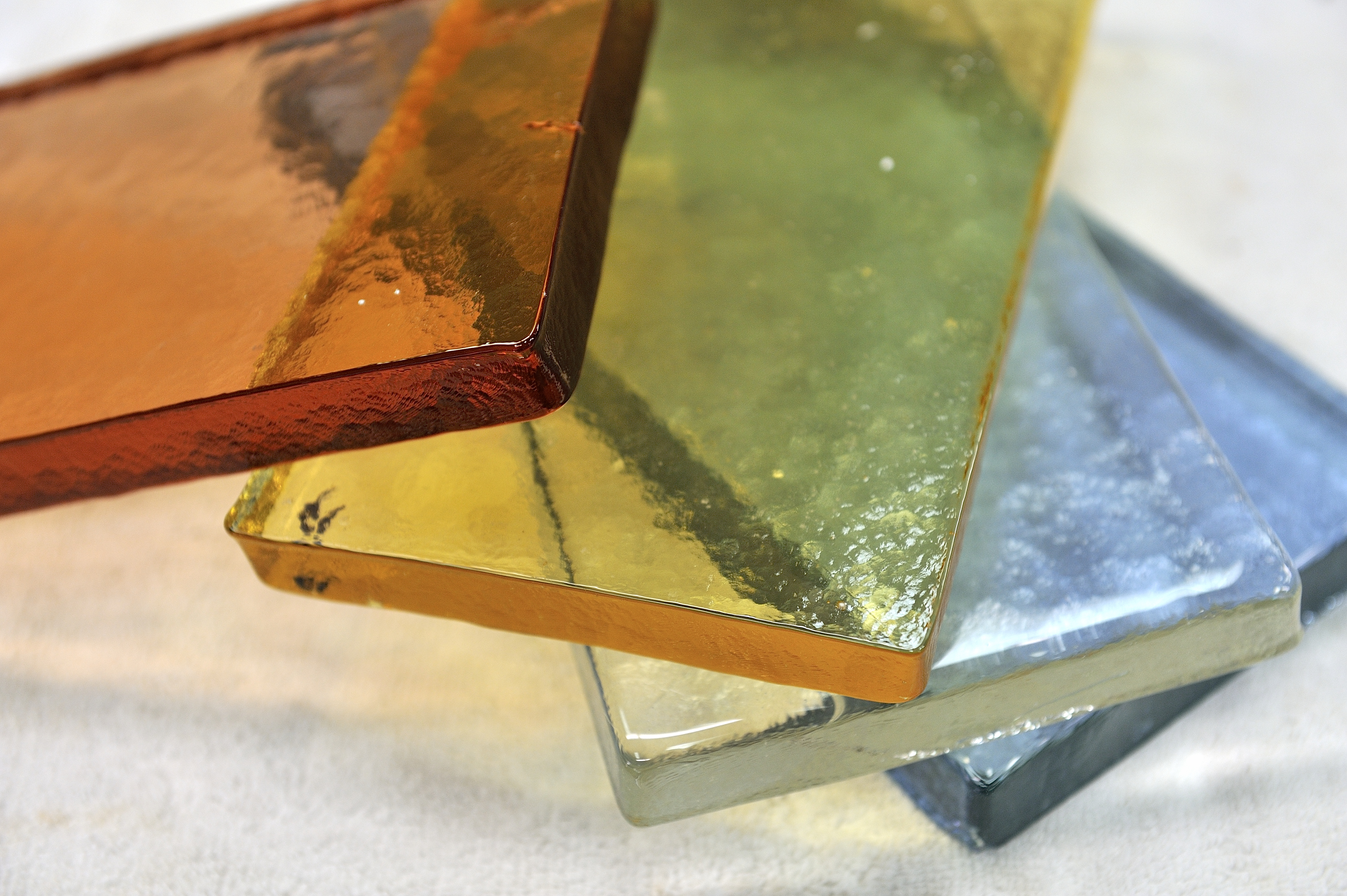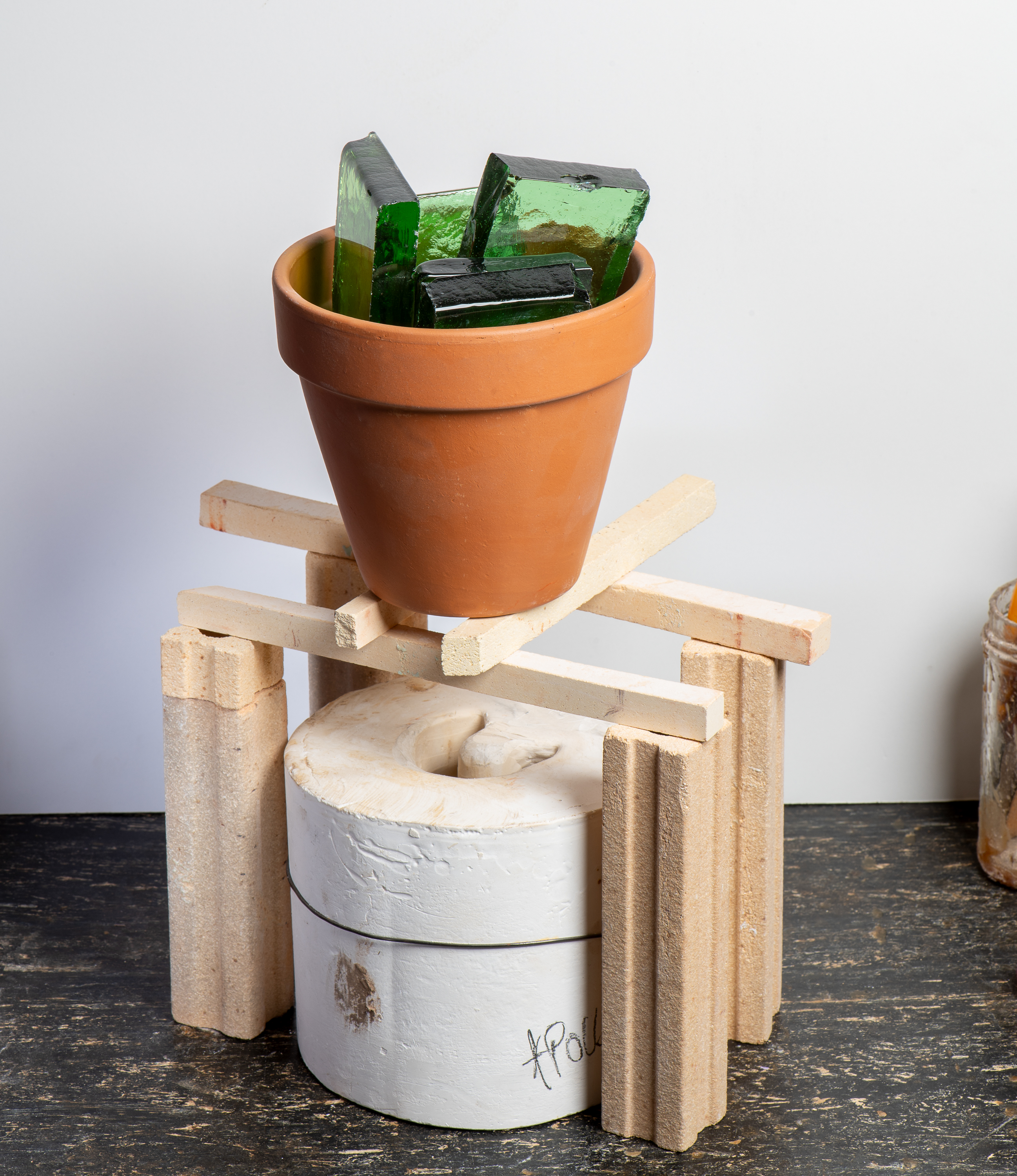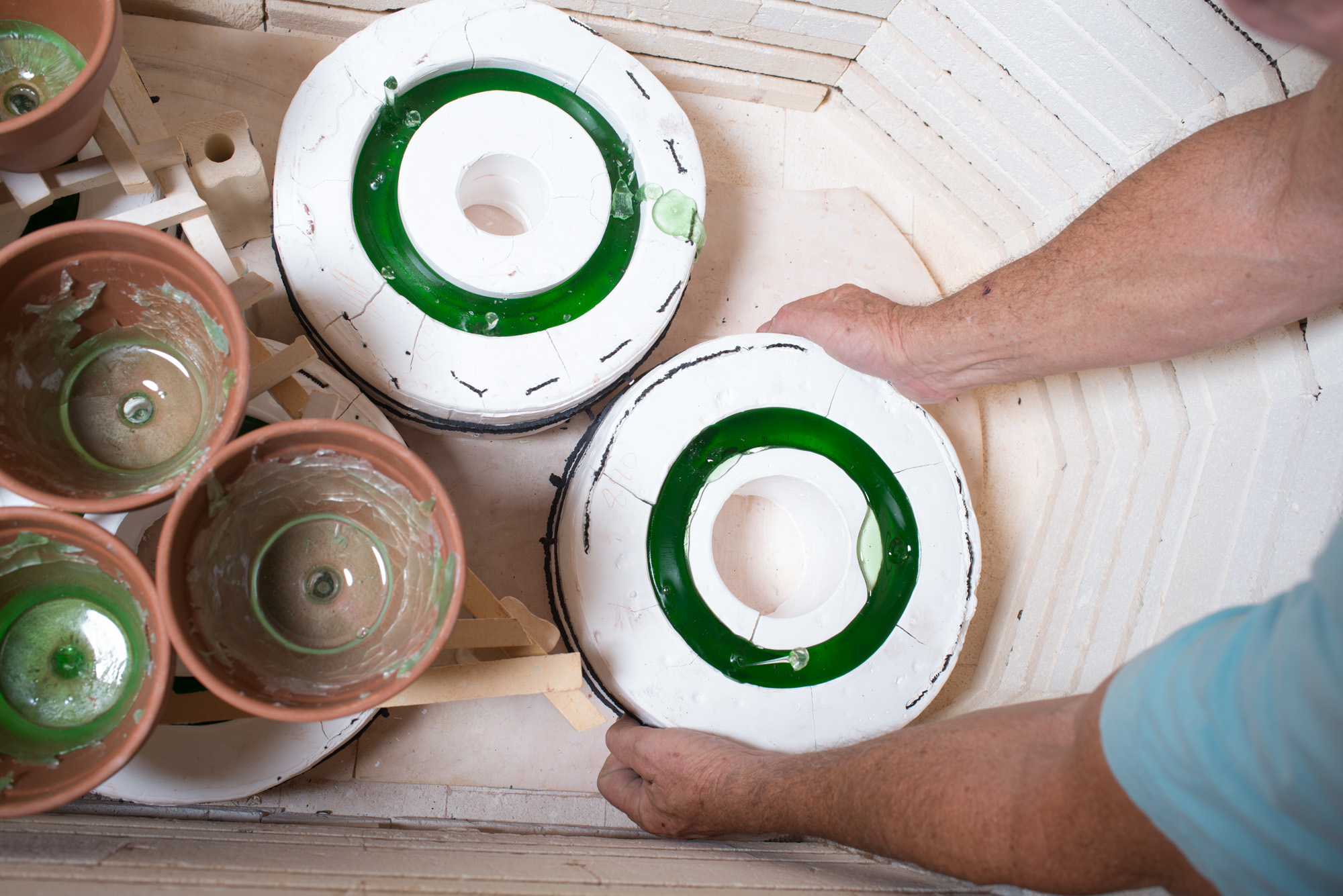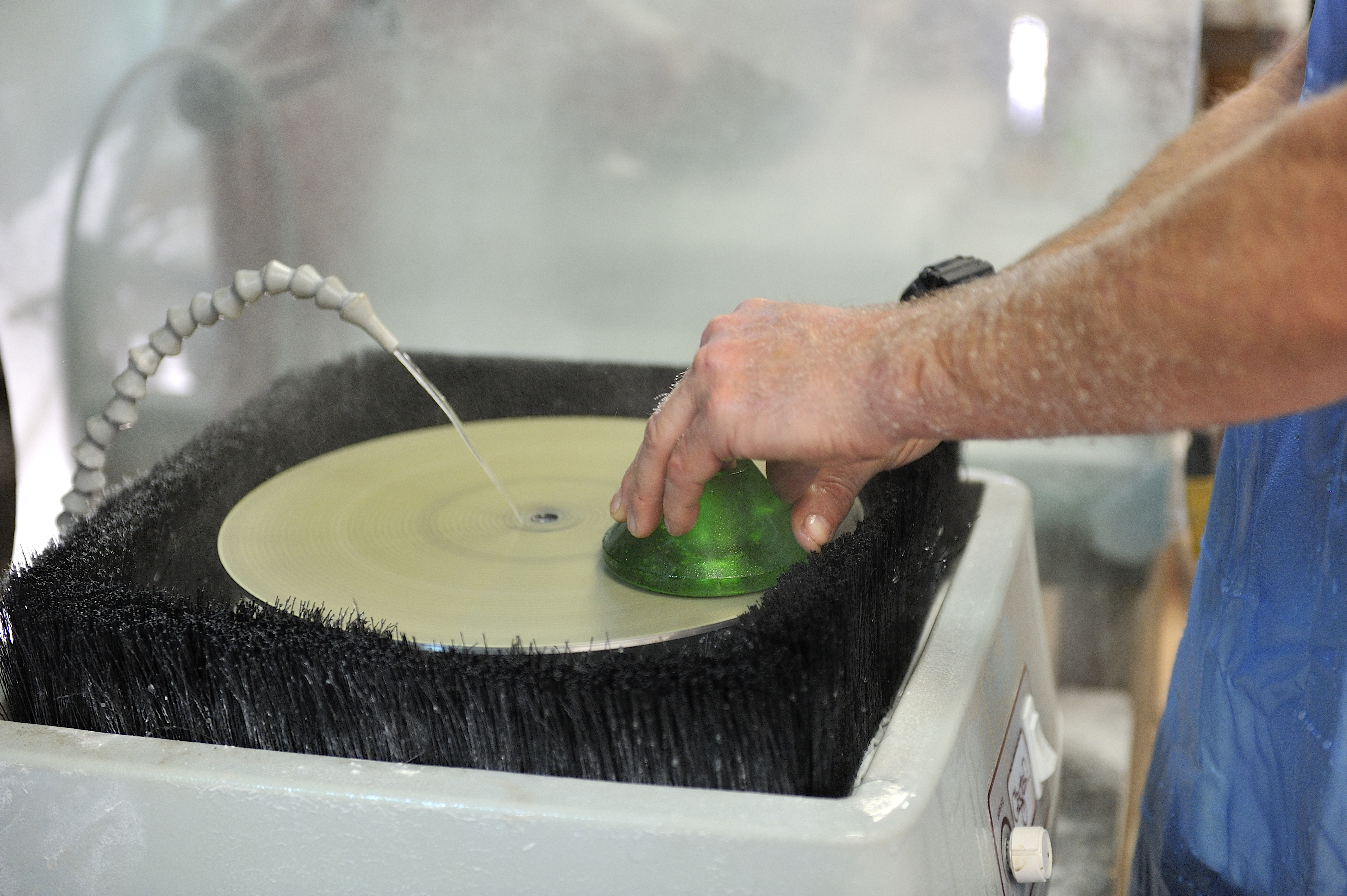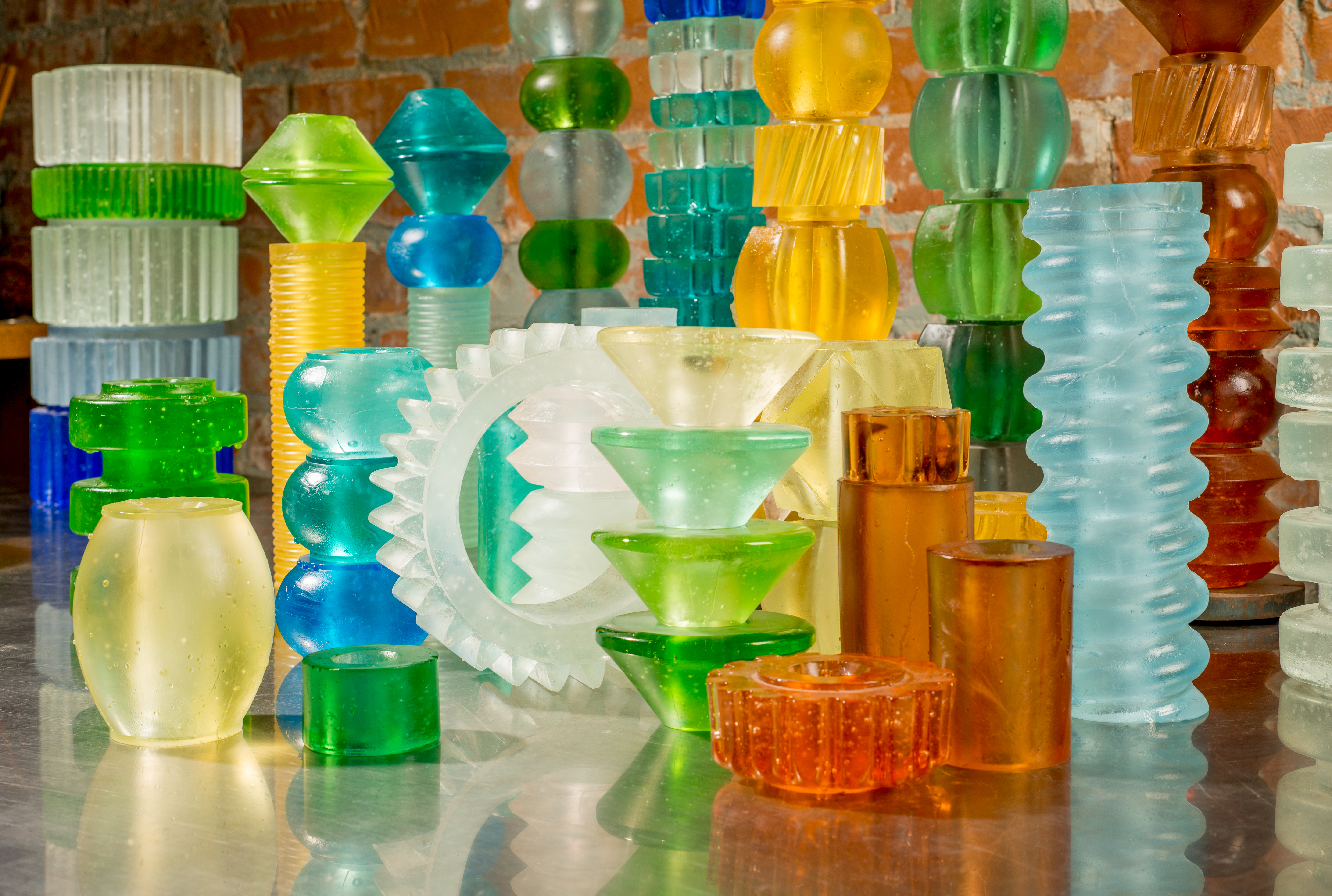GLASS WORKS / HOW IT'S MADE
Lost wax casting is a versatile method for the creation of glass objects. The process begins with constructing a rubber mold around an item. Once the mold is finished, the item is removed and molten wax is poured into the mold cavity. The wax is allowed to cool and then removed. The wax model is an exact duplicate of the original item. A plaster/silica mold able to withstand high heat is created around the wax mold. the wax is steamed out of the mold - or "lost" - creating a negative of the original item. The mold is placed into a kiln where a crucible containing a measured quantity of glass is placed on top of the mold and the kiln temperature is raised to approximately 1400 °F. The glass melts and flows through a hole in the bottom of the crucible filling the negative space in the mold. Once the mold is filled with the molten glass the kiln is slowly cooled to room temperature or "annealed". The length of time to cool the casting is dependent on the thickness of the glass casting and can take days or even weeks to cool. After removing the mold from the kiln the plaster/silica mold is carefully removed from the glass casting. The glass item can now be worked on to finish its surface. Any number of finished glass castings can be assembled into sculptural objects.






